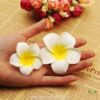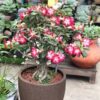**The Preferred Porcelain Flowers: A Haven for Wildlife**

Porcelain flowers, scientifically known as Hoyas, boast an array of species that captivate not only human admirers but also a diverse range of wildlife. These botanical gems attract various animals with their nectar-rich blooms, offering a vital source of food and habitat. From pollinators to herbivores and even predators, different species of porcelain flowers cater to the unique preferences of wildlife, contributing to ecosystem health and biodiversity. In this article, we explore some of the preferred porcelain flowers among different animal species, highlighting their importance in supporting wildlife populations.
**1. Bees and Butterflies:**
Among the most well-known pollinators, bees and butterflies are drawn to the nectar-rich blooms of porcelain flowers. Species such as Hoya carnosa and Hoya pubicalyx produce clusters of small, star-shaped flowers with abundant nectar, attracting bees and butterflies in search of food. As they visit the flowers to feed on nectar, these pollinators inadvertently transfer pollen between flowers, facilitating plant reproduction. By providing a reliable food source for bees and butterflies, porcelain flowers play a crucial role in supporting pollinator populations and maintaining ecosystem balance.
**2. Hummingbirds:**
Hummingbirds, with their unique ability to hover and extract nectar from flowers, are frequent visitors to certain species of porcelain flowers. Varieties such as Hoya cinnamomifolia and Hoya lacunosa produce tubular-shaped flowers with copious amounts of nectar, which are well-suited to the long, slender bills of hummingbirds. These avian pollinators play a vital role in pollinating porcelain flowers and other flowering plants, contributing to the diversity of flora and fauna in their habitats. Providing nectar-rich blooms for hummingbirds helps ensure their continued presence and contributes to the health of ecosystems.
**3. Ants:**
While not traditional pollinators, ants are attracted to the extrafloral nectaries found on some species of porcelain flowers. Extrafloral nectaries are specialized structures that secrete nectar outside of the flower, often on leaves or stems, attracting ants in search of food. Certain species of Hoyas, such as Hoya australis, produce extrafloral nectaries that provide sustenance for ants, which in turn offer protection against herbivores and pests. This mutualistic relationship benefits both the porcelain flowers and the ants, demonstrating the intricate connections between plants and insects in ecosystems.
**4. Birds:**
In addition to hummingbirds, other bird species are known to visit porcelain flowers for food and shelter. Small birds, such as finches and sparrows, may seek refuge among the dense foliage of certain Hoyas, using them as nesting sites or roosting spots. The presence of porcelain flowers in garden landscapes provides habitat and resources for a variety of bird species, enhancing biodiversity and contributing to the overall health of ecosystems. By incorporating porcelain flowers into bird-friendly gardens, homeowners can create welcoming habitats for avian visitors.
**5. Insects and Arachnids:**
Porcelain flowers are also frequented by a diverse array of insects and arachnids, including beetles, flies, spiders, and mantises. These creatures may visit the flowers to feed on nectar, pollen, or prey on other insects attracted to the blooms. Certain species of Hoyas, such as Hoya australis and Hoya kerrii, produce fragrant blooms that attract a wide range of insect visitors. By providing food and habitat for insects and arachnids, porcelain flowers contribute to the biodiversity and ecological functioning of their habitats.
**Conclusion:**
In conclusion, porcelain flowers serve as vital resources for a variety of wildlife species, offering food, shelter, and habitat in their natural environments. By attracting pollinators, birds, insects, and other creatures, porcelain flowers contribute to ecosystem health and biodiversity, enhancing the beauty and resilience of natural landscapes. By understanding the preferences of wildlife for different species of porcelain flowers, we can better appreciate their ecological significance and work to conserve and protect them for future generations to enjoy.

